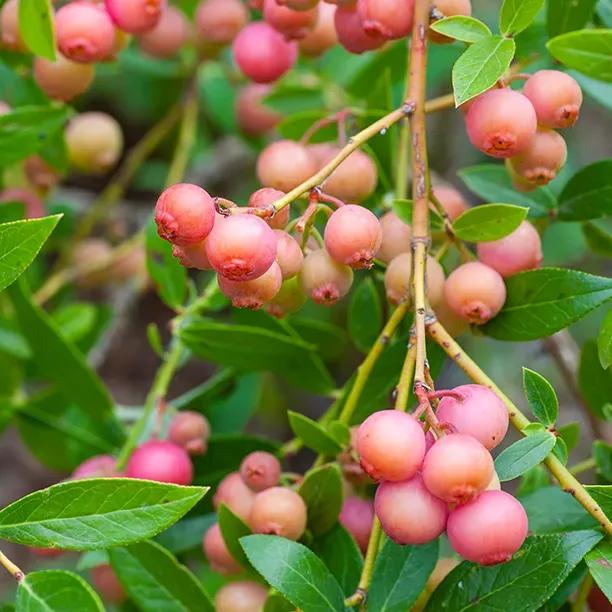Pink Lemonade Blueberry Plants
Honest Delivery Prices- Size: 1.5m
- Fruit: Pink, firm, sweet
- Exciting new variety
- Close to fully self-fertile
- Use: eating fresh
- Picking: Aug-Sept
Description
Pink Lemonade Plants, Vaccinum ashei
An exciting new late season variety, with profuse flowers and sweet, pink fruit that ripen in August and September. It is practically self fertile, but still performs a bit better with a partner. To 1.5m
Browse more blueberry varieties.
Features
- Size: 1.5m
- Fruit: Pink, firm, sweet
- Exciting new variety
- Close to fully self-fertile
- Use: eating fresh
- Picking: Aug-Sept
Growing Pink Lemonade Blueberries
All blueberries need free draining, acid soil (around pH 5.5) or a pot filled with ericaceous compost. Make sure the soil is consistently moist during the growing season. They require ericoid rootgrow.
When they're ripe, the berries will be purple-blue on the back, and they'll come away easily from the plant.
Although some varieties are partially self-fertile, all blueberries will crop best with pollination partners nearby.
Aftercare: net your plants as the fruits develop and ripen, or the birds will have them all. If you're growing in pots, rainwater, not tap, is best. Take a look at our Guide to Growing Blueberry Plants.
Planting Instructions
How to plant Jersey blueberries
Choose a spot with as much light as possible. Improve the soil from the hole by removing roots, weeds, large stones and other rubbish and mixing in about 25% by volume of well-rotted compost or manure.
Position your blueberry so its roots are spread out, wet them and sprinkle them with ericoid rootgrow.
Then backfill the hole with mixed soil and ericaceous compost, firming it gently as you go. Water in thoroughly.
Read more about how to plant blueberries in the open ground here and in pots here.


.webp)